Ameyoko Shopping Street (known as Ameya-Yokocho, アメ横) is an open-air market that spans an impressive 164,227 square feet. Ameyoko is nestled between Ueno and Okachimachi Stations in Taito Ward, Tokyo.
With a rich history stemming from the post-war era and hundreds of small shops, this lively market is an essential addition to any Tokyo itinerary, especially after visiting Ueno Park. In this guide, you will uncover the history of Ameyoko shopping street, learn about the food and shopping options there and find tips and tricks for a wonderful visit.
As you stroll through Ameyoko market, you’ll discover an array of shops selling everything from fresh seafood and produce to discount clothing, and Japanese confectionary. The street’s lively atmosphere is amplified by street-food stalls and affordable restaurants, which are usually packed in the evening or during festivals.
Ameyoko is one of the best Tokyo yokochos and just a few subway stops from Asakusa, making a popular sightseeing spot for international tourists.
Brief history of Ameyoko
Ameyoko has its roots deeply embedded in Tokyo’s post-World War II history. The area was once a densely populated residential district, characterized by closely packed wooden houses. Unfortunately, the Tokyo Air Raid in 1945 brought devastation to the district, leaving it in ashes.
Like a phoenix, makeshift stalls and shops began to emerge in the war-torn landscape, setting the stage for the market’s transformation.
Ameyoko had a reputation as a black market, where essential goods were sold at inflated prices, and illicit activities were not uncommon. During the aftermath of World War II, it was a thriving black market in a struggling Tokyo, where food and clothing were in short supply.
The Yakuza capitalized on this need, and Ueno Station became the gateway for illegal goods. In 1947, the introduction of saccharin, a new artificial sugar, led to the opening of over 300 candy shops in the area, and the area was renamed Ameyoko, meaning sweet neighbourhood. After the outbreak of the Korean War in 1950, American clothes flooded the market, both legally and illegally, and the name was reinterpreted as an abbreviation of America, making it the American neighbourhood.
Thanks to the efforts of a wealthy benefactor, Hirokichi Kondo, the Tokyo municipal government was able to establish an official market, selecting 80 vendors to comprise the new Kondo Market. Recognizing the need for intervention, local authorities also began regulating the area, marking the birth of today’s thriving street market.
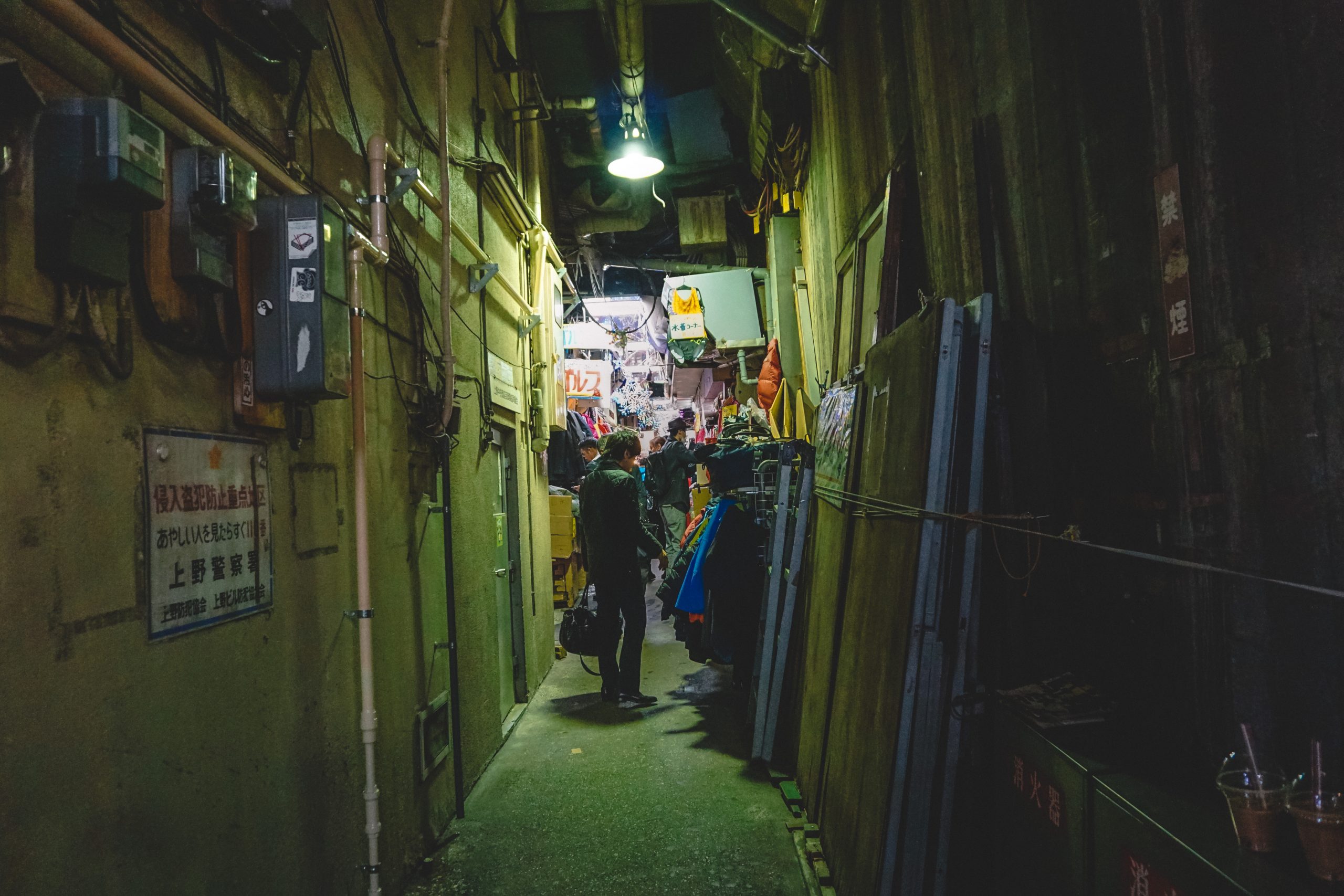
Ameyoko today
Ameyoko market today is a complex network of narrow alleys and intersecting passages lined with posters, neon signs, and hanging merchandise. The intricate maze of alleys and buildings extends both above and below ground, creating a constantly shifting play of light and shadow.
Unlike the rest of the Tokyo, salarymen are not a common sight in Ameyokocho. Instead, you will very likely find African vendors trying to lure tourists into karaoke bars, pachinko parlours, and various shops. Ameyoko continues to feel like a market with a multitude of stalls and scents that fill the air, and indistinct colours that overwhelm the senses.
You will find many sweets sold here, but also fantastic street food. You will come across some unusual shops selling sporting good at discounted prices. Don’t worry, the brands are authentic, not counterfeit, they are just from previous seasons, but they still come at great value for the price.
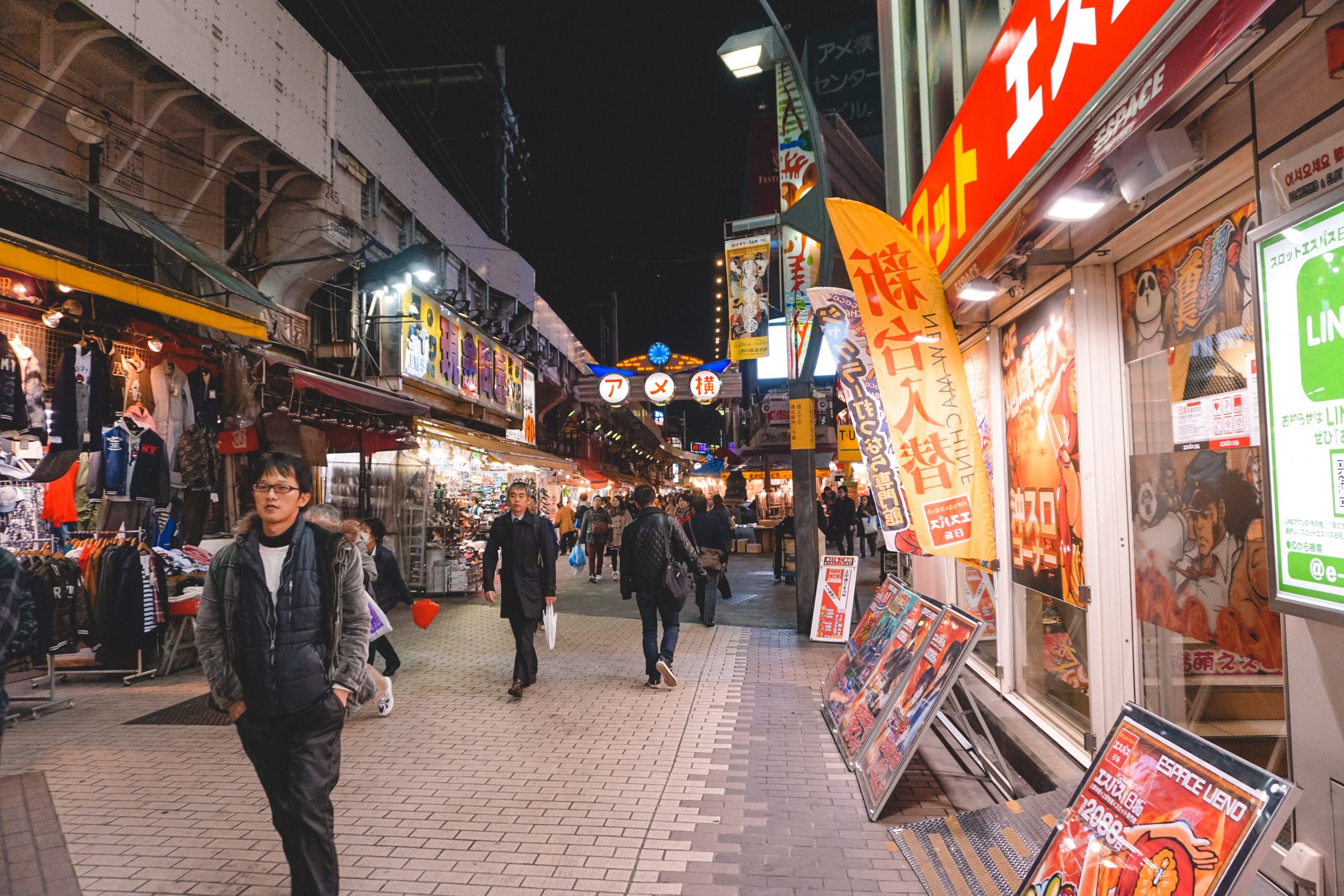
How to get to Ameyoko
Once you’re in Tokyo, take the train or subway system to reach Ueno Station.
The JR Yamanote Line, JR Keihin-Tohoku Line, JR Utsunomiya Line (Tohoku Main Line), JR Takasaki Line, and JR Joban Line all stop at Ueno Station. You can use your Japan Rail Pass on these trains.
For the Tokyo metro, take the Tokyo Metro Ginza Line and Hibiya Line that serve the station. Don’t forget to familiarise yourself with the Tokyo subway map for your ease.
After arriving at Ueno Station, the Ameyoko market street is just a short walk away. Exit from the station’s south exit (Shinobazu Exit) and walk south for about 5 minutes. Ameyoko runs parallel to the elevated train tracks between Ueno Station and Okachimachi Station.
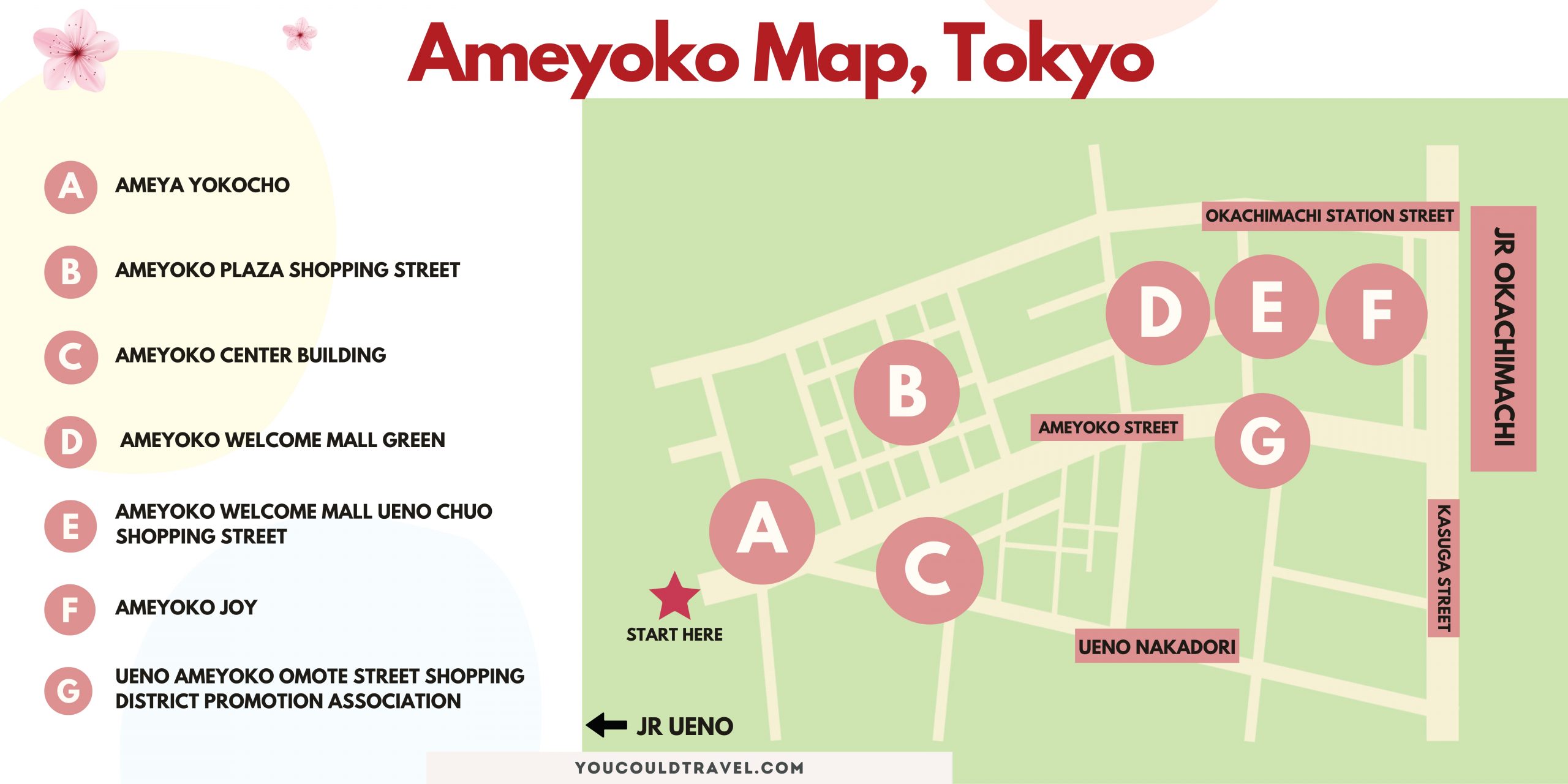
Ameyoko shopping street
There are so many stores selling all sorts of goods here in Ameyoko market. Make sure to allocate a few hours to explore the busy shopping street where you will find gifts, souvenirs, clothes, and even fresh food. Here are some of the things you can expect to find. And with over 400 stores, you can bet that you’ll have a massive selection to pick from.
Fresh seafood: Ameyoko is well-known for its fresh seafood stalls, where you can buy fish, shellfish, and other marine products at reasonable prices. Here are some of the most prominent seafood stores: Second Kanekami Sanko Store (business for three generations since 1945), Kojimaya, Nodako Foods, Daito, Marumo (been in business for 72 years) and more.
Fruits and vegetables: The market also has many fruit and vegetable vendors includingTawara product, Hamaya Food Ueno, Hamaya Food Main Store.
Snacks and street food: Ameyoko is a great place to try Japanese street food and snacks, such as takoyaki, yakitori, okonomiyaki, and taiyaki. You can also find many international food options and lots of candy stores. Try Uncle Joe Toast, Minatoya Food which specialises in seafood rice bowls, Minatoya for takoyaki, CutFruit for fruit skewers, Motsuyaki for stewed horse offal.
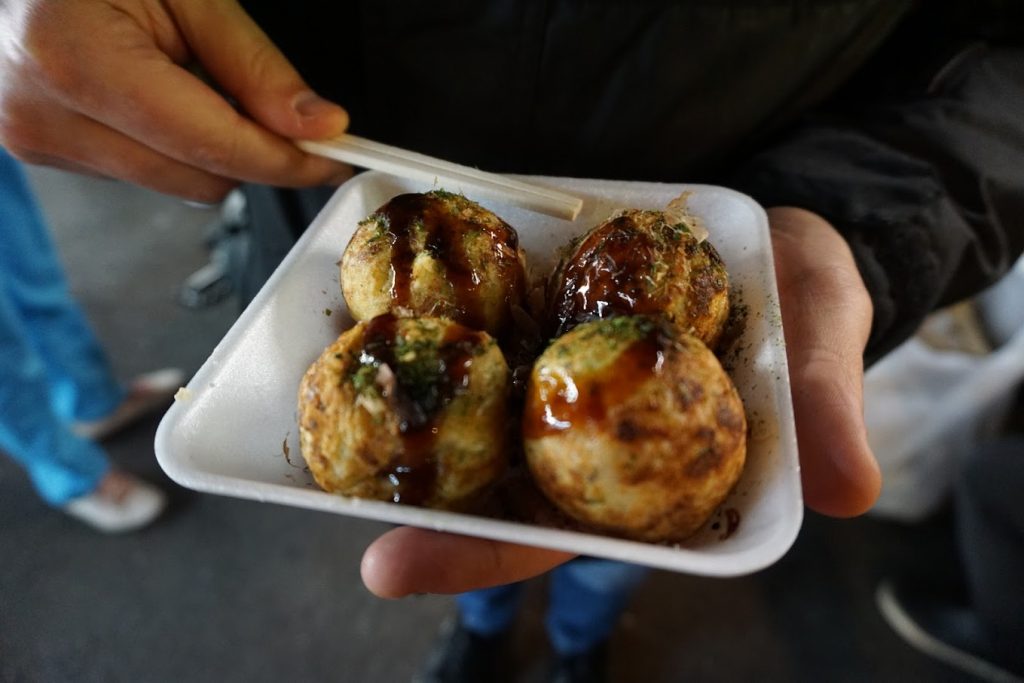
Clothing and accessories: Ameyoko is the place for finding affordable clothing, shoes, and accessories at bargain prices. There is New York New York for casual clothes, Jalana for tshirts, Regatte for Western clothing and Freak market for fashion items with Japanese patterns.
Cosmetics and beauty products: Japanese cosmetics and skincare products are popular worldwide, and Ameyoko has many stores that sell these items, often at discounted prices. Your best bet is to head to any drugstore like Sun Luck Ueno Ameyoko, Kokumin Drug Okachimachi, A・A・A Sankei, OS Drug Ueno or T’S perfumes.
Electronics and gadgets: Some shops in Ameyoko sell electronics and gadgets, although the selection may not be as extensive as in other areas like Akihabara.
Souvenirs and gifts: Ameyoko is a great place to find souvenirs, gifts, and Japanese crafts, such as pottery, tea sets, and traditional toys.
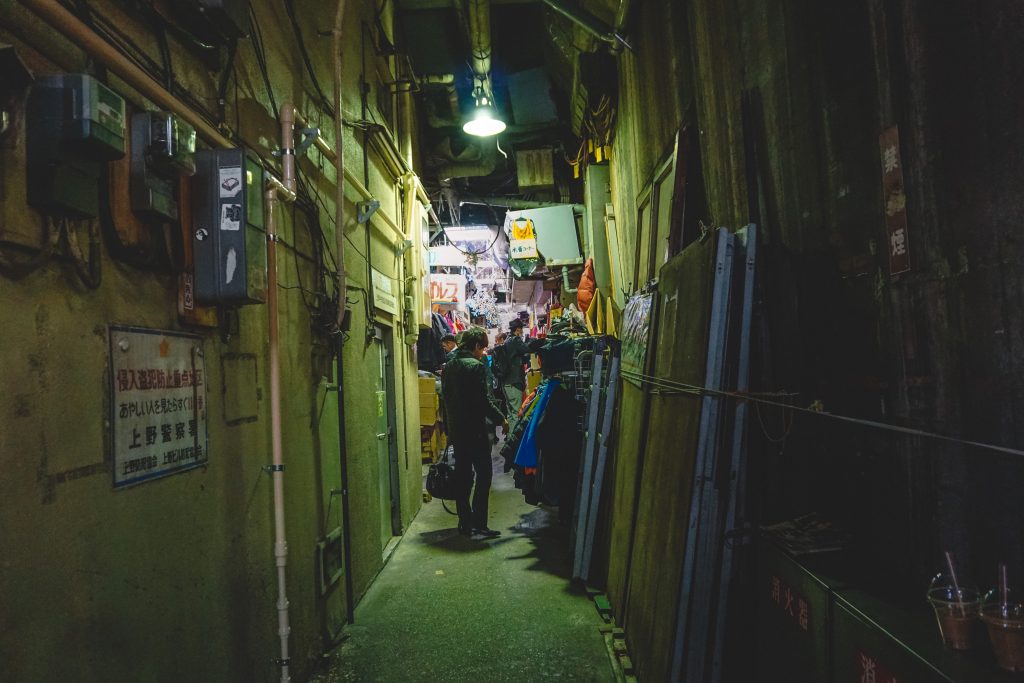
Watches and jewelry: Several stores in Ameyoko specialize in watches and jewelry, with a wide range of options for various budgets.
Luggage and bags: If you are like me who almost always purchases more than I can fit in my suitcase, then you might want to consider Ameyoko for backpacks, and suitcases at discounted prices. Find them at Mix, Works, or Clover Bag Ameyoko to name a few.
You can find the complete list of shops in Ameyoko on the Ameyoko official website, although do note that it’s in Japanese language only.
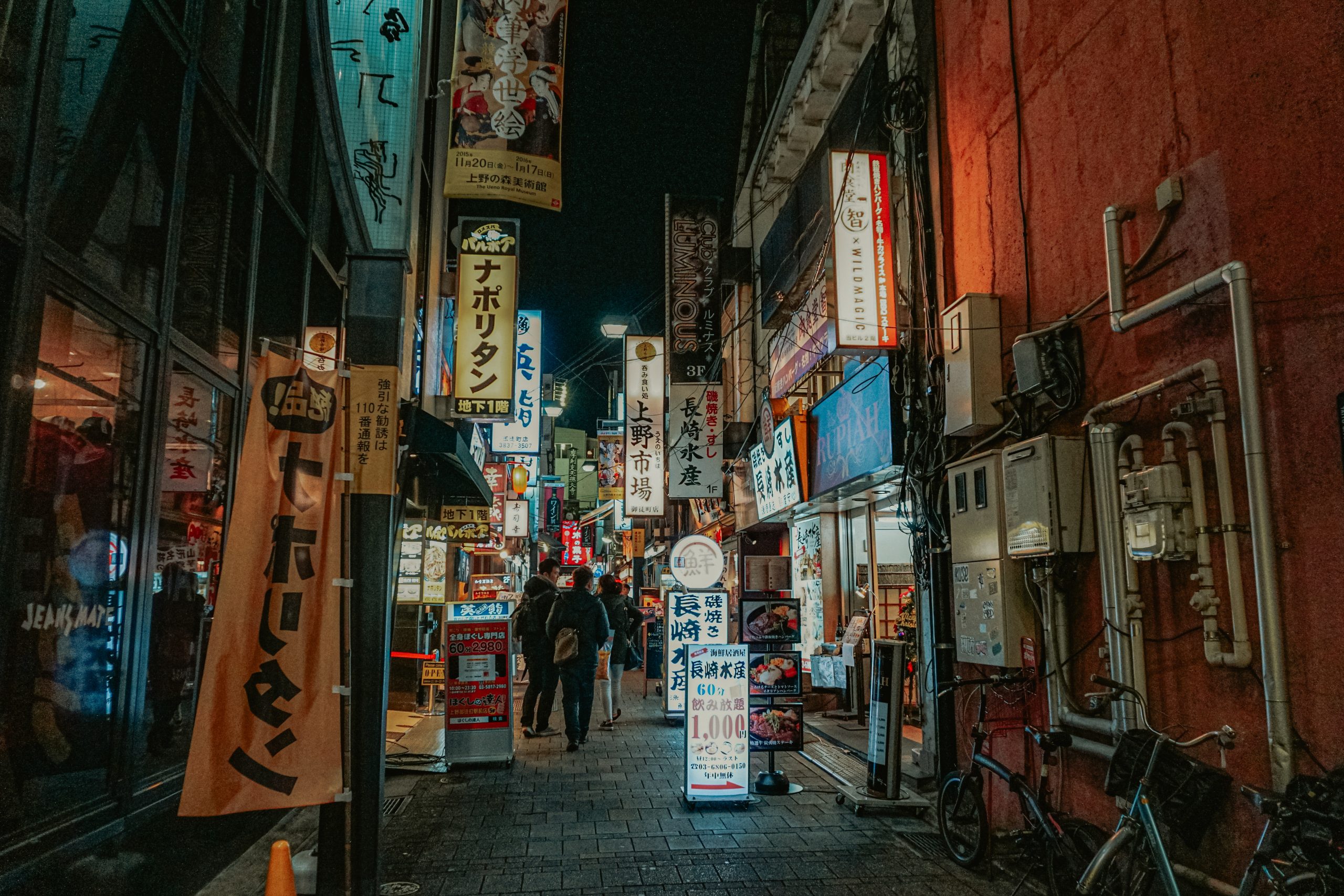
Tips for Ameya yokocho market
There are a few things to keep in mind when going Ameyoko shopping. I put together some tips that will help you make the most of your trip.
Wear comfortable shoes: Ameyoko is a busy market, so be prepared for lots of walking. Wearing comfortable shoes will ensure you can explore the area with ease.
Be prepared for crowds: Ameyoko can get quite crowded, especially during weekends and holidays. If you don’t enjoy large crowds, try visiting during the day or during off-peak hours.
Learn a few basic Japanese phrases: While many shopkeepers and vendors in Ameyoko may speak some English, knowing a few basic Japanese phrases can go a long way.
Shop around for the best deals: You’re likely to find varying prices for the same items. Compare prices and look for the best deals before making a purchase.
Be respectful of local customs: As a visitor, it’s important to be respectful of local customs and traditions. For example, avoid being overly loud or disruptive, and follow any posted rules or guidelines in the market area.
Try a variety of foods: Ameyoko is known for its diverse selection of street food, so try new and unfamiliar dishes. It’s the best way to figure out the best Japanese food you like most.
Bring a reusable shopping bag: Ameyoko is an excellent place to shop for souvenirs, snacks, and other items. To help reduce plastic waste and make it easier to carry your purchases, bring a reusable shopping bag with you.
Plan your visit: Just remember that Ameyoko can get very crowded during matsuri and on weekends. I visited on Golden Week and was surprised to see how busy it got even during the day.
Try to haggle: In some shops and stalls at Ameyoko, haggling is part of the shopping experience. You are welcome to politely negotiate prices with vendors, but keep in mind that not all prices are negotiable, and some shops have fixed prices.
Visit before the New Year: If you can, plan your visit to Ameyoko around the New Year period. This is a popular time for locals to shop for traditional Japanese New Year foods.
Carry cash: While some shops and vendors at Ameyoko may accept credit cards, it’s best to carry cash with you. Many smaller stalls and street food vendors only accept cash, so having Japanese yen will make it much easier.
Ameyoko FAQ
Frequently Asked Questions
What is Ameyoko known for?
Ameyoko (short for Ameya Yokocho) is a shopping market known for its lively atmosphere, featuring over 400 shops, stalls, and vendors. Ameyoko is particularly famous for offering a wide range of products at bargain prices, including clothing, accessories, cosmetics, electronics, and traditional Japanese items.
One of the distinctive features of Ameyoko is its selection of food stalls and eateries. You can find various types of cuisine, such as Japanese, Chinese, Korean, and Thai, as well as street food like takoyaki and yakitori. The market is also a popular spot to purchase fresh seafood, dried goods, and snacks.
The market is particularly busy during the year-end shopping period, known as “osho-gatsu” when people flock to the area to purchase traditional New Year’s goods.
Where is Ameyokocho?
Ameyokocho is located in the Ueno district of Taito City, Tokyo, Japan. It runs parallel to the Yamanote Line train tracks, stretching from Ueno Station to Okachimachi Station.
What is the nearest station to Ameyoko Shopping Street?
The nearest stations to Ameyoko Shopping Street are Ueno Station and Okachimachi Station.
What time does the Ameyoko market open?
The Ameyoko market opens from as early as 10am, although do bear in mind that some stalls and stores have different opening times.
Is Ameyoko worth visiting?
Yes, Ameyoko is definitely worth visiting, especially if you’re interested in experiencing a lively and bustling atmosphere, exploring a traditional Japanese market, or looking for bargains. Some reasons to visit Ameyoko include:
Shopping: Ameyoko has everything you could possibly think of. You will find a wide range of products, from clothing and accessories to electronics and traditional Japanese items, often at discounted prices. It’s an excellent place to shop for souvenirs, gifts, or personal items.
Food: The market is ideal for fresh food but also delicious street food like takoyaki, taiyaki and sweets. A great place to explore in the evening, after dark.
Atmosphere: Ameyoko is an atmospheric open air market. It’s an exciting place to see a different side of Tokyo during your itinerary.
Proximity to other attractions: Ameyoko is located in Ueno, which is home to many other popular attractions, such as Ueno Park, Ueno Zoo, and the Tokyo National Museum.
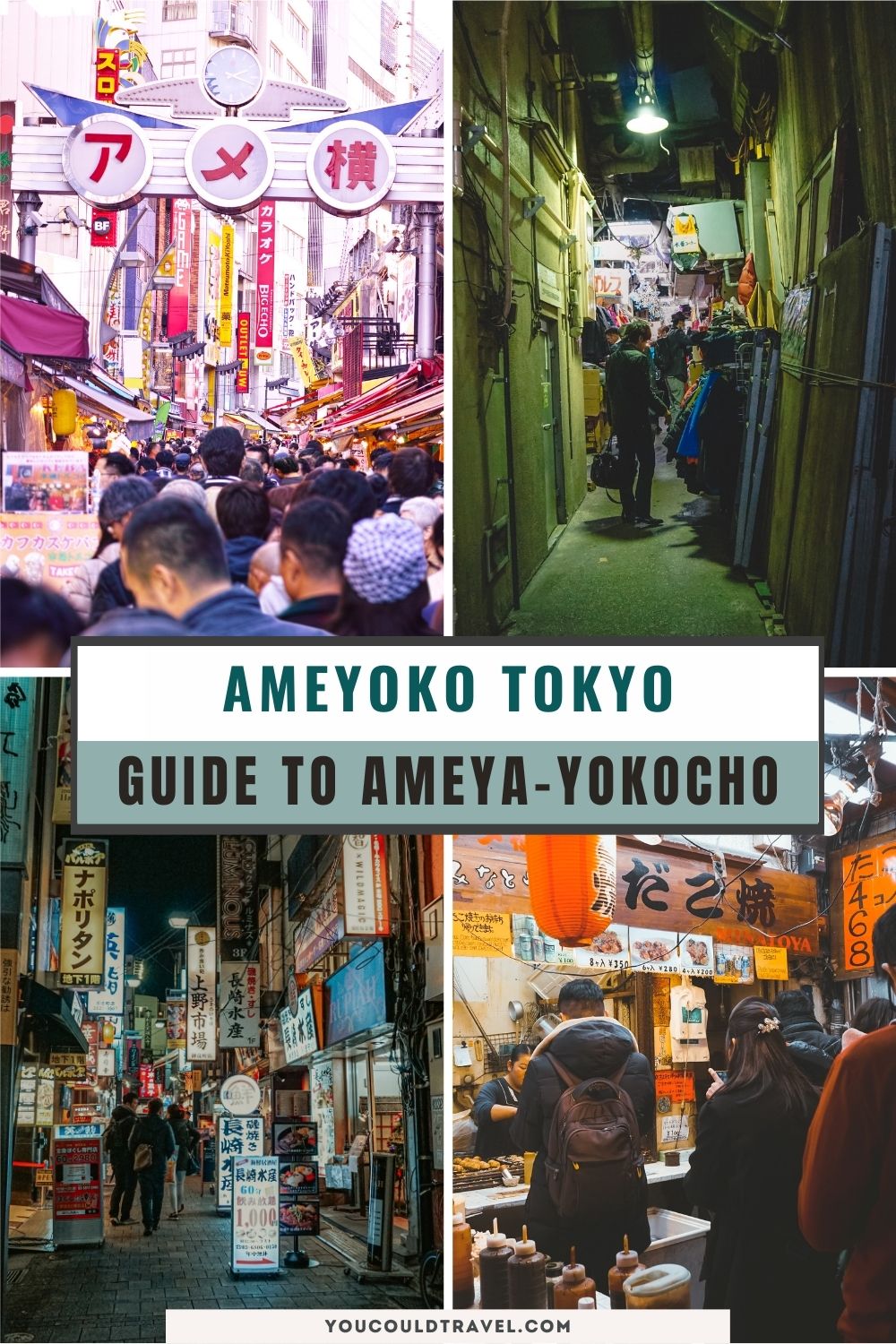
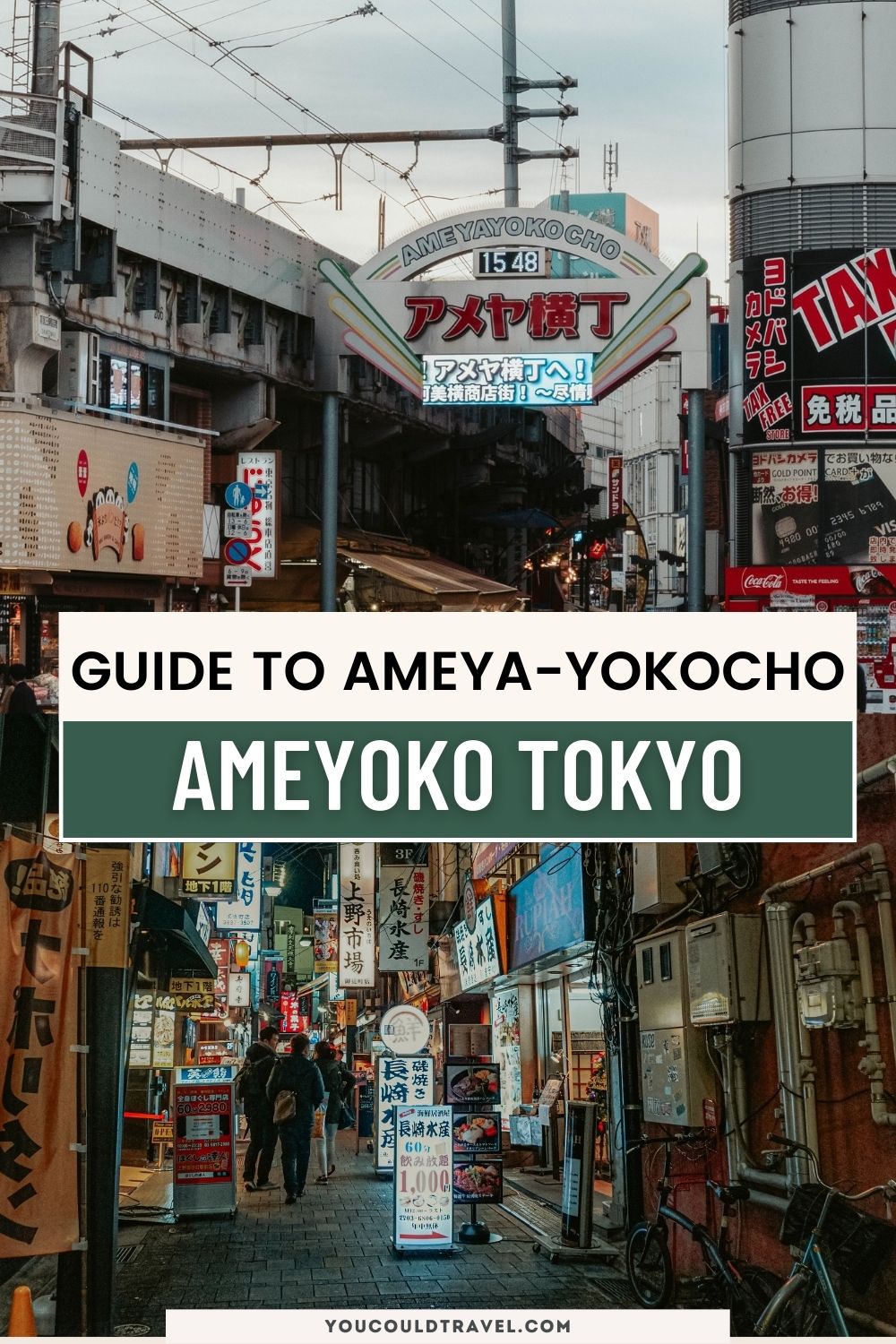

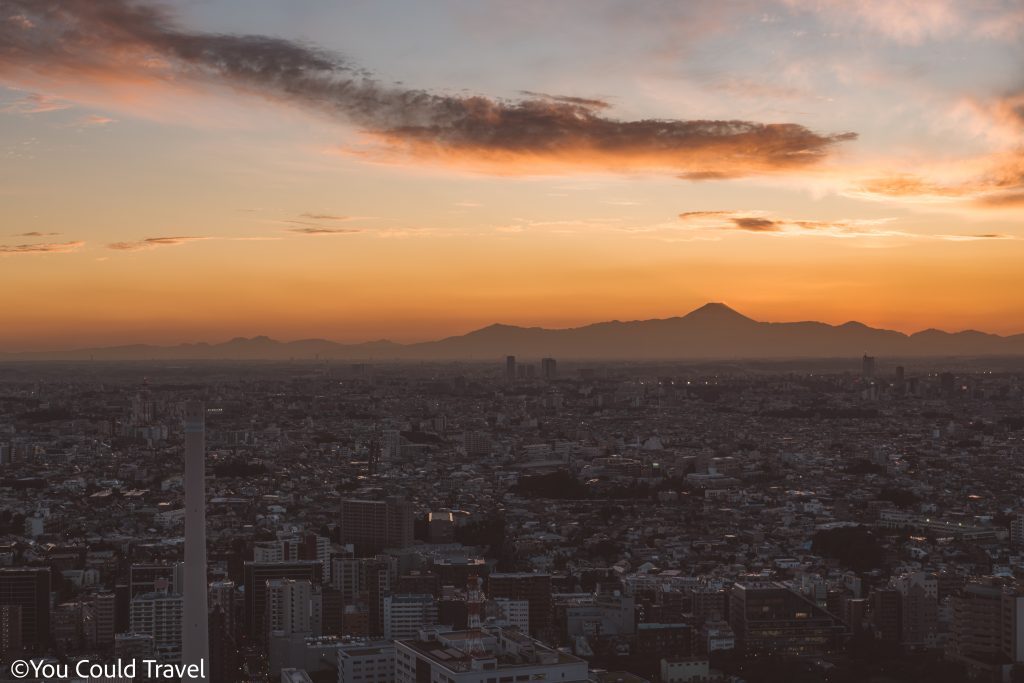
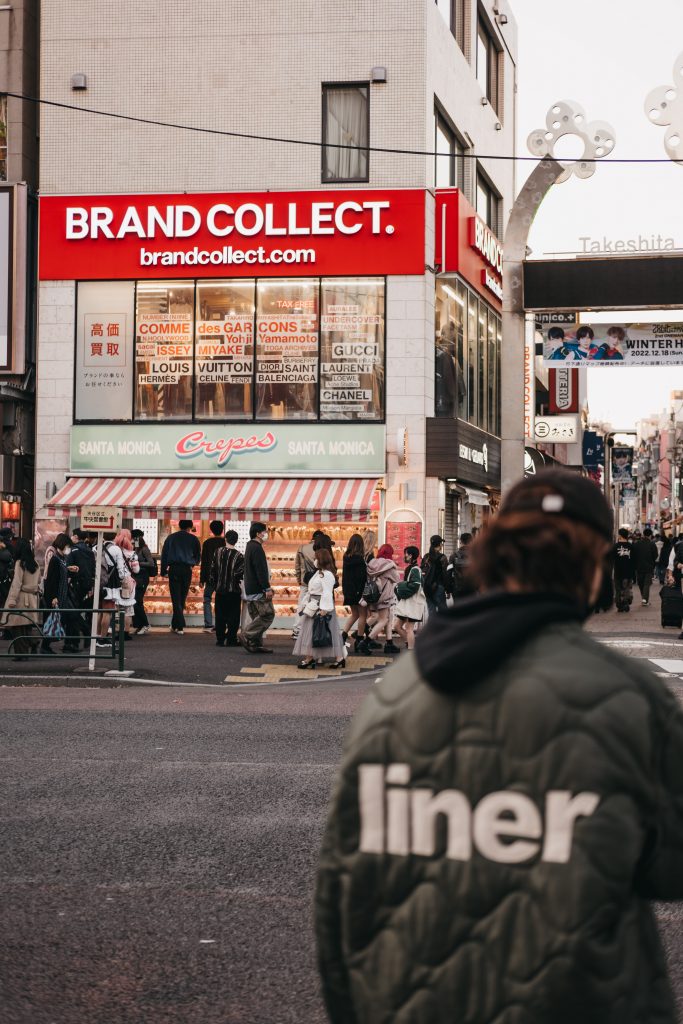
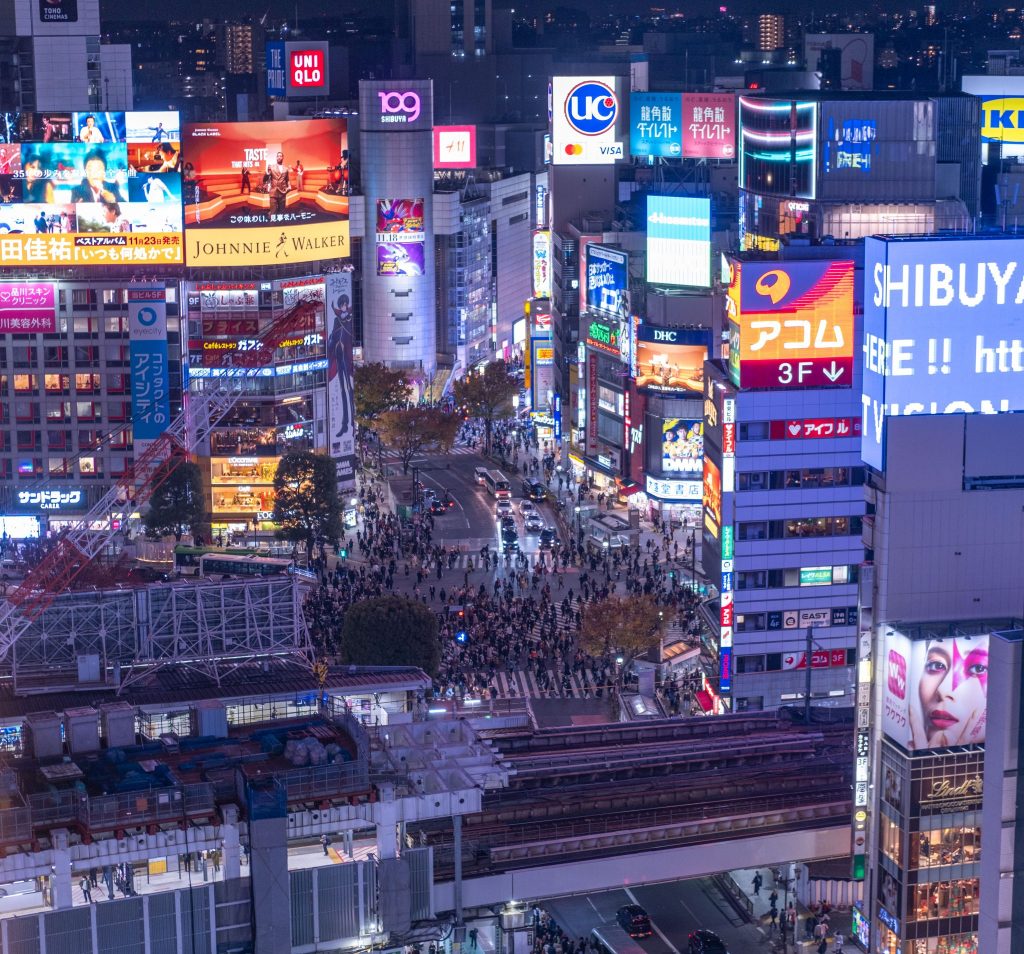
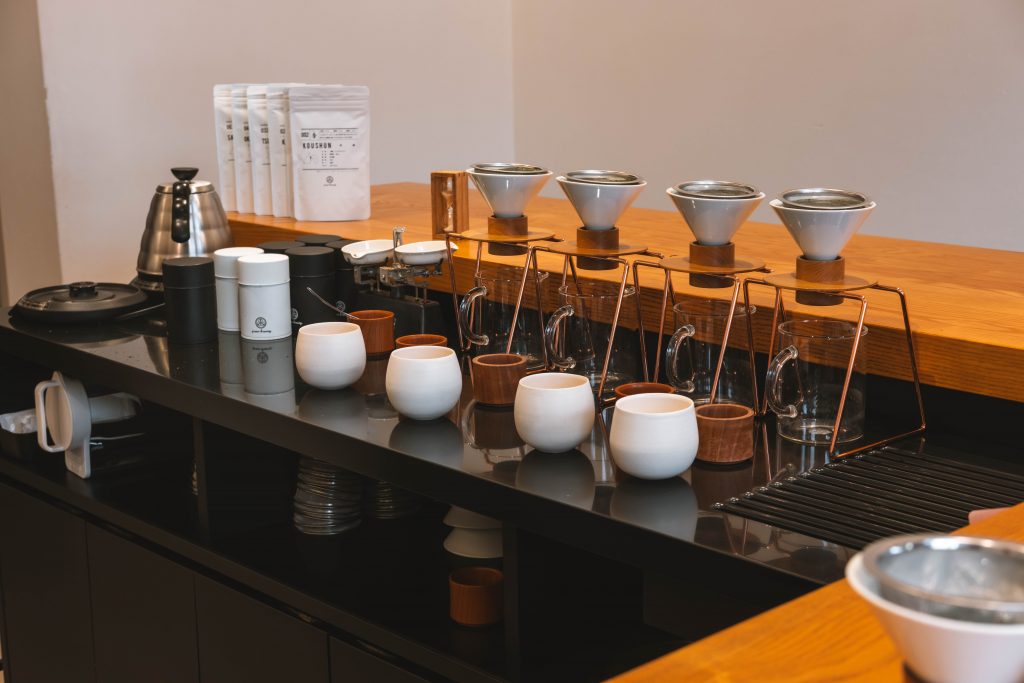
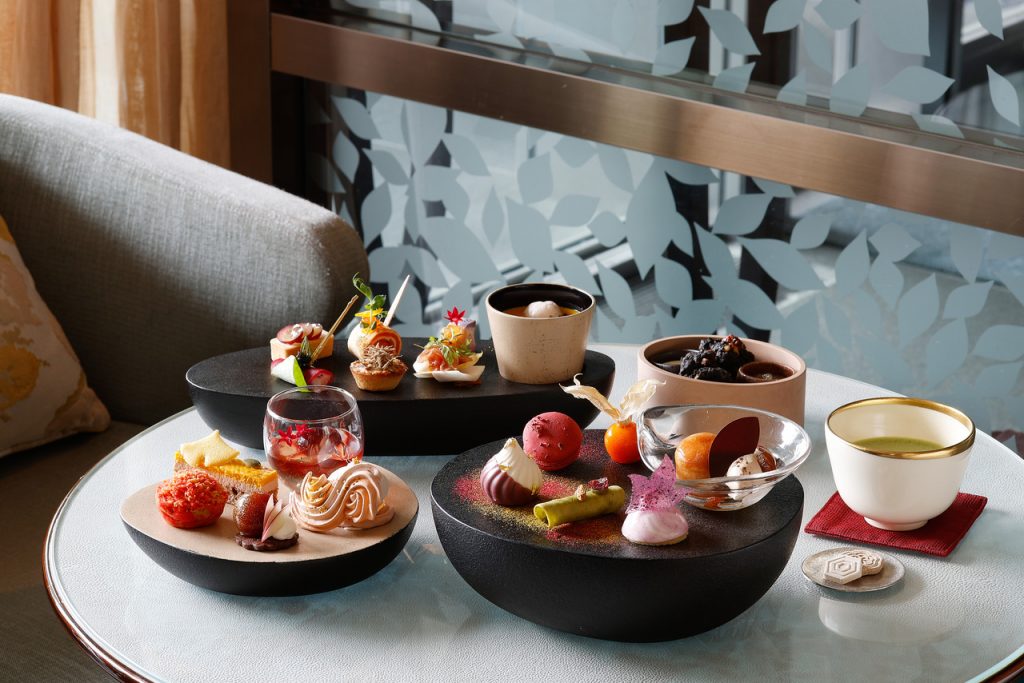
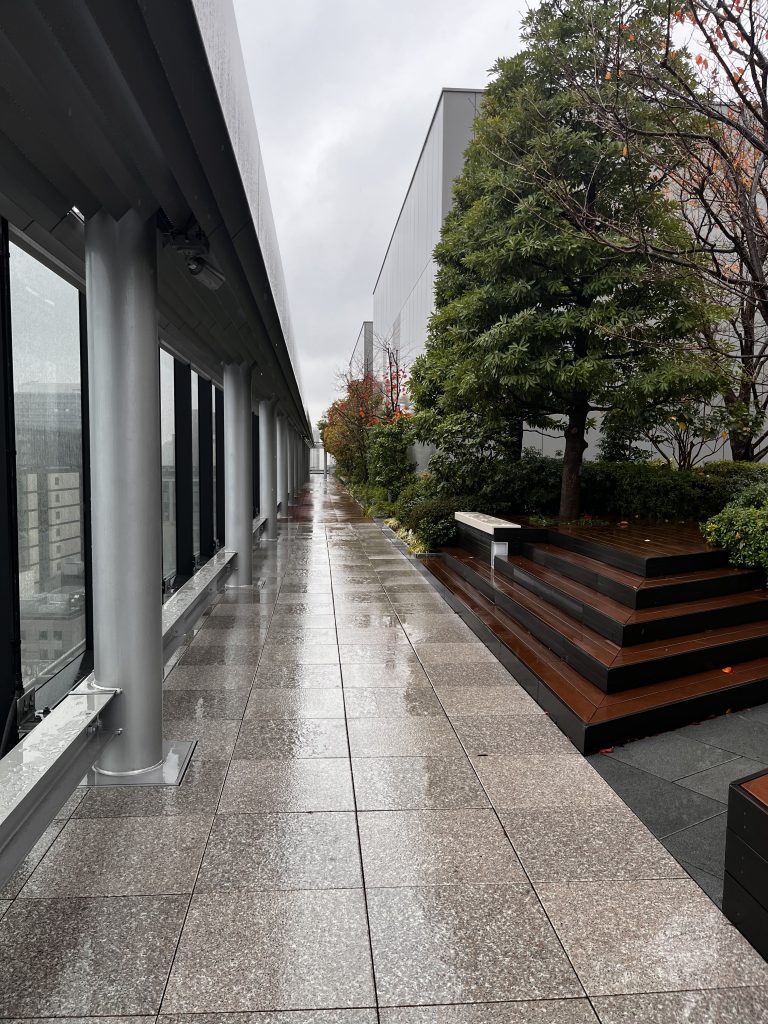
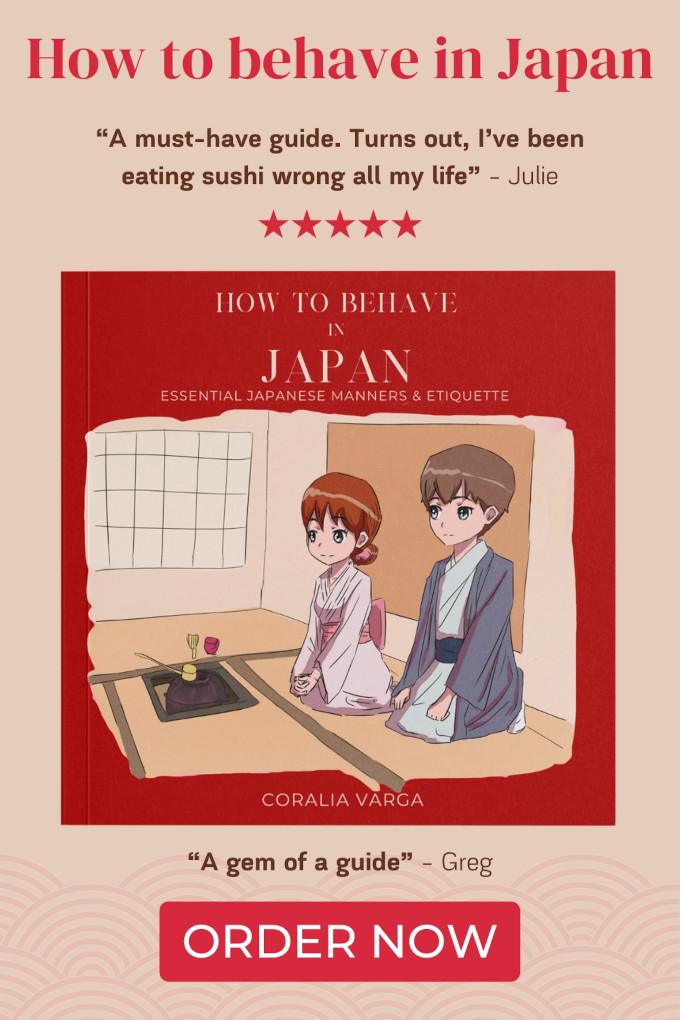

Leave a Reply